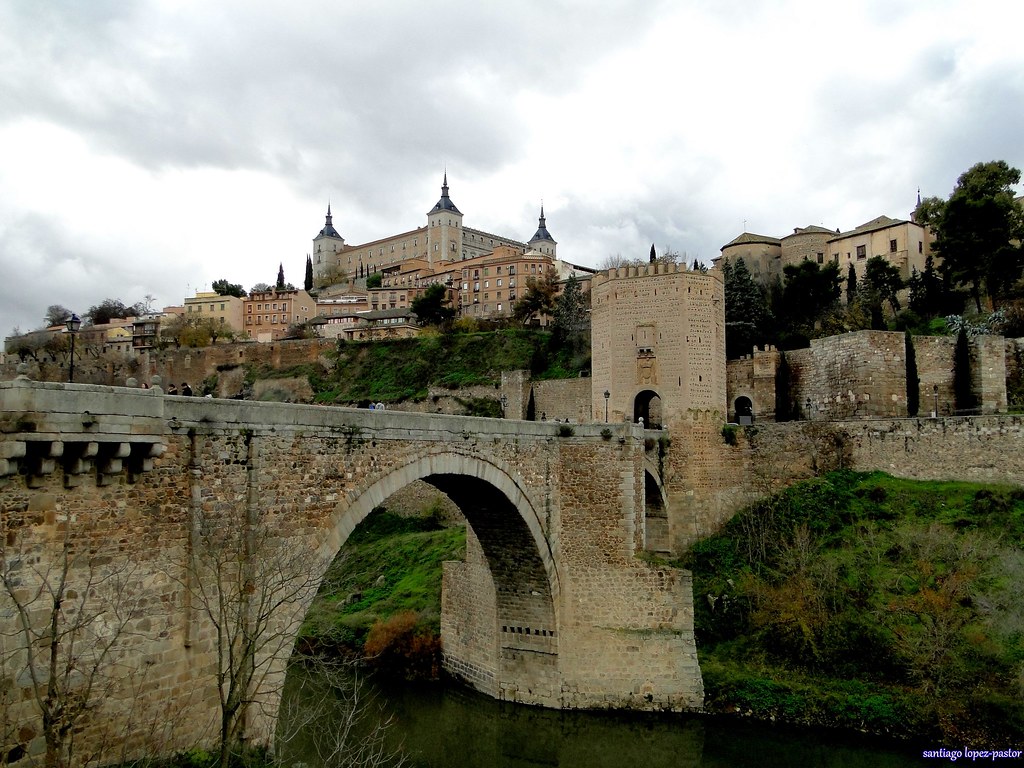Must-see historic sights in Toledo Spain
The city of Toledo in Spain has a very rich history of more than 2000 years. Successively a Roman municipium, the capital of the Visigothic Kingdom, a fortress of the Emirate of Cordoba, an outpost of the Christian Kingdom, and in the 16th century, the temporary seat of supreme power under Charles V. It still has many works of art and architecture of three major religions – Judaism, Christianity and Islam.
Toledo Cathedral

Historic City of Toledo

Monastery of San Juan de los Reyes

Santa María la Blanca Synagogue

Alcázar of Toledo

The Alcázar of Toledo was originally a Roman palace from the 3rd century, but it was restored under Charles I (Holy Roman Emperor Charles V) and his son Philip II of Spain in the 1540s. In 1521, Hernán Cortés was received by Charles I at the Alcázar, following Cortes" conquest of the Aztecs.
The façades are Renaissance in style, and it has towers and crenellated defences according to a preliminary design by Alonso de Covarrubias, subsequently completed by Juan de Herrera. After the last reconstruction it became the site of the Army offices and museum.
El Greco Museum

Mosque of Cristo de la Luz

Puente de Alcántara

The Puente de Alcántara is a Roman arch bridge in Toledo, spanning the Tagus River. The word Alcántara comes from Arabic القنطرة (al-qanţarah), which means 'bridge'.
Located at the feet of the Castillo de San Servando, the bridge was originally built by the Romans after they founded the city. It was rebuilt by in the 9th and later in the 13th century by Alfonso X el Sabio. In the Middle Ages it was one of the few entrances of the pilgrim into the city.
Puente de San Martín

Puente de San Martín bridge was constructed in the late 14th century by archbishop Pedro Tenorio to provide access to the old town from the west, complementing the older Puente de Alcántara linking to the east. Both sides of the bridge were heavily fortified with towers, the more recent dating from the 16th century.
The Puente de San Martín features five arches, with the largest in the middle reaching an impressive span length of 40 m. Only very few bridges in the world had reached that mark until then.
San Servando Castle

City walls of Toledo

Toledo was walled by Romans, and a lot of its stones were reused later in built walls, as the original perimeter was subsequently tripled. The Visigothic King Wamba renewed the Roman fortifications, sculpting in its gates an inscriptions. The inscriptions were destroyed by the Muslims, and restored in 1575 by the Corregidor Juan Gutiérrez Tello.
The Arabs widened the city and the walls. After the Reconquista, the walls were again advanced in outer line and new gates were constructed. The gates and towers of the Walls of Toledo have survived until these days.
Hospital de Tavera

Roman Circus
